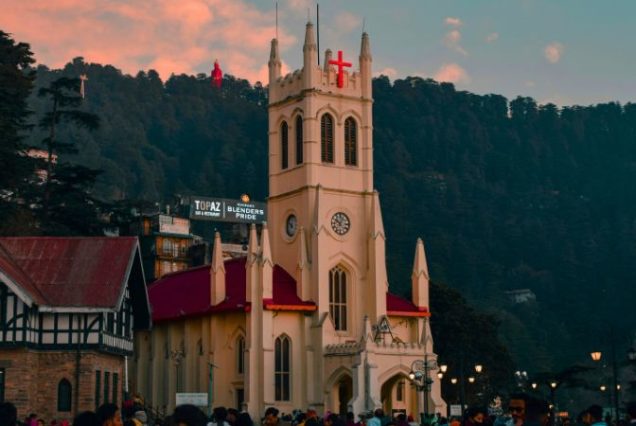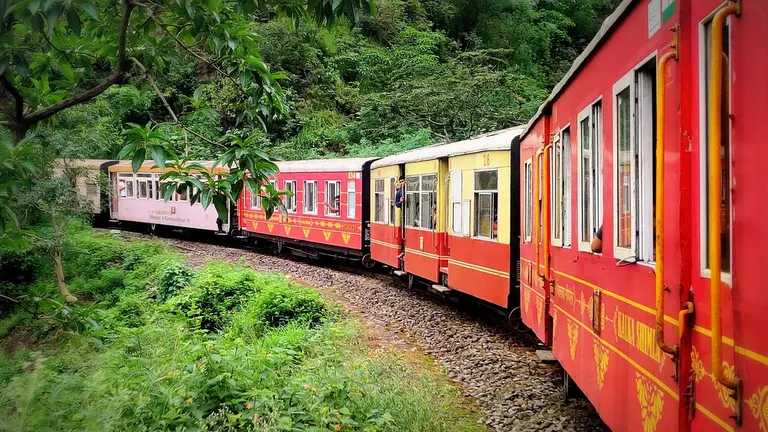Tabo Himachal Pradesh
Tabo, a small town in Himachal Pradesh’s Lahaul and Spiti region, is located on the Spiti River’s banks. At 10,760 feet, the chilly desert hamlet is encircled by snow-covered Himalayan peaks and scree slopes. For those seeking an unusual trip, Tabo Himachal Pradesh also known for its calm and serene beauty, is a must-see location.
The settlement can be found on the road from Kaza to Reckong Peo since it is only around 40 kilometres from the border between India and Tibet. One of the most well-known sights in Tabo is a 1,000-year-old monastery that the Dalai Lama himself regards as one of the holiest. The list also contains several temples and some historic caves originally occupied by Buddhist monks seeking refuge from the bitter winters.
Tour details
- Best time to visit March, April, May & June
- Ideal Duration from Delhi 3-4 Days
- Minimum Budget INR 5000
- Website https://www.realhimachal.in/
Best Places To Visit In Tabo Himachal Pradesh
Buddhist monastery complex Tabo Gompa, also called Tabo Chos-Khor Monastery in the area, has nine subsidiary temples. It was established in 996 AD and is regarded as the nation’s oldest continuously operating Buddhist monastery. The monastery’s modest elevation and mud-colored exteriors are not to be taken in. Paintings, statues, murals, Thangka art, and frescoes adorn the interior walls. Four ornate stupas and cave shrines are also part of the monastery complex.
The magnificent Tabo caverns are visible on the hillside and are a part of the complex of monasteries that dates back a thousand years. Monks previously lived in these man-made caves, using them as a refuge from the chilly Himalayan winters. These caves are still used by monks today for meditation. The caves have tiny passageways that lead to further little nooks and spaces. These caverns’ roofs have ventilation holes chiselled into them. You would have to travel for about 200 metres to get to the caves.
Sopona Lake is a well-known attraction in Spiti for thrill-seekers. To enjoy the ultimate experience, go to this lake created by melting glaciers. Some of the most beautiful vistas of the Spiti valley and the nearby Manang Himalayan range may be found there.
One of the tallest mountains in the Indian state of Himachal Pradesh is called Manirang. It is situated where the districts of Kinnaur, Lahaul, and Spiti converge. Before the construction of the motorable road, the high Manirang pass, which was close to the top, was one of the early trading routes between Spiti and Kinnaur.
The Ropa valley in Kinnaur is connected to the Spiti valley via the Manirang Pass. This is a high pass with a three to five-kilometre-long snow bed on the Spiti side and a five-kilometre-long snow bed on the Ropa valley side. The descent to the Ropa valley side through a very small ravine is much steeper than the ascent to this pass from the Spiti side through the settlement of Mane. On this route, there is scarcely any other traffic. The tracks that lead to the pass are in poor condition, quite taxing, and occasionally dangerous.
Dhankar Lake is a high-altitude lake located in the Spiti Valley of the Indian state of Himachal Pradesh. It can be reached via a trek from the Dhankar monastery, which is located above it in the Lahaul-Spiti area at an elevation of 4,140 metres.
In the Indian region of Lahaul and Spiti, there is a settlement called Dhankar Gompa in addition to a Gompa, or Buddhist temple. It is located in the Spiti Valley, above Dhankar Village, between the towns of Kaza and Tabo, at a height of 3,894 metres.
You cannot afford to miss Kaza, only 48 kilometres or an hour’s drive from Tabo. The municipality, located at 11,980 feet, has breathtaking views over the valley. Kaza is notable for its arid landscapes, crystal clear streams, and smatterings of lush meadows while being surrounded by towering mountains. Along with other attractions, Kaza features the renowned Sakya Tangyud Monastery in addition to its natural beauty.
The Pin Valley National Park, 48.5 kilometres from Tabo, is a wildlife enthusiast’s paradise. Although it is home to more than 20 distinct bird and animal species, the endangered Snow Leopard is its main draw. Additionally, the park is home to about 12 large cats and various other wild creatures, including the Tibetan Gazelle, Woolly Hare, Marten, Red Fox, Siberian Ibex, and Himalayan Black Bear.
The Tabo Helipad is another well-known sight in Tabo, in addition to the Tabo Monastery, the city’s most notable landmark. In addition, Tabo has a few well-known schools and a rest house for the public works department.
The Himalayan desert of Spiti is where Tabo is located. There may be some agricultural land and a few sparse pastures, but most of the terrain is desolate. You might even find a tiny garden at your hotel, or you could travel to Kinnaur to take in the rich vegetation. Additionally, you can go to Pin Valley National Park, a haven for wildlife that is just 48 kilometres away.
Here Are Some of the Most Popular Tabo Tour Packages
Top Adventures
Where To Stay In Tabo
How To Reach Tabo
Via Air
No flights go directly to Tabo. The Kullu Manali Airport, situated in Bhuntar, is the closest. The airport is 300 kilometres from Tabo, where you can reserve a taxi.
Via Train
There aren't any trains that go straight to Tabo. The Shimla railway station is 362 kilometres from the settlement and is the closest station. Taxis may be accessed from the train station.
Via Road
Driving is the most effective way to get to Tabo. You may get a taxi from Manali or Shimla that will take you straight to Tabo village. One bus only travels to Tabo, departing from the Reckong Peo bus stop at 6:30 AM.
Best Time To Visit Tabo
May through October is the ideal season to visit Tabo. At this time of year, most well-known tourist destinations are still accessible because the weather is neither too cold nor too hot. The weather in Tabo may be somewhat erratic. The short summer season typically lasts from May until July. In the summer, daytime highs of roughly 20 °C can fall to lows of 5 °C at night.
The monsoon season in August, however, increases the risk of landslides and makes the roads leading to the arid Spiti region slick and damp. It is, therefore, wise to avoid August. From mid-September to early April, there are the harsh winter months.
Wintertime temperatures often range from 15 to 45 degrees Celsius. During the winter, there is also a lot of snowfall.
F&Q’s Tabo
Is Tabo worth visiting?
For those seeking an unusual trip, Tabo, known for its calm and serene beauty, is a must-see location. The settlement can be found on the road from Kaza to Reckong Peo since it is only around 40 kilometres from the border between India and Tibet.
Why Tabo Monastery famous?
In both India and the Himalayas, Tabo is renowned for being the oldest continuously running Buddhist enclave. Its walls are covered with numerous murals illustrating stories from the Buddhist canon. As a national historic property of India, the monastery is safeguarded by the Archaeological Survey of India (ASI).
How do you stay at the Tabo monastery?
Travelers on a tight budget should stay at the Tabo monastery guest house. It offers a ten-bed dorm in addition to some private rooms. Although some rooms may have communal bathrooms, there is no hot water.
When was Tabo Monastery built?
In 996 AD, the Tabo monastery was built. The monastery was renovated following the earthquake in 1975, and a new Du-Kang, or Assembly Hall, was built in 1983. The Kalachakra ceremonies were held here by the 14th Dalai Lama in 1983 and 1996.
Our blog
Travel Tips and Advice
-
Kalka Shimla Toy Train ( Timing, Booking, Ticket Fees, Route, History)
Read MoreIt was constructed primarily during the British imperial days in India with an intention for rail road connectivity from the summer…
-
Himalayan Nature Park Kufri – All You Need to Know
Read MoreThe Himalayan Nature Park Kufri is on the snow-fall hills 8000 ft above sea level. The park stretches to 90…
Other Links
Book amazing tours and exciting destinations with Real Himachal
Subscribe to get latest update & news
- © 2023 Real Himachal All Rights Reserved.

















